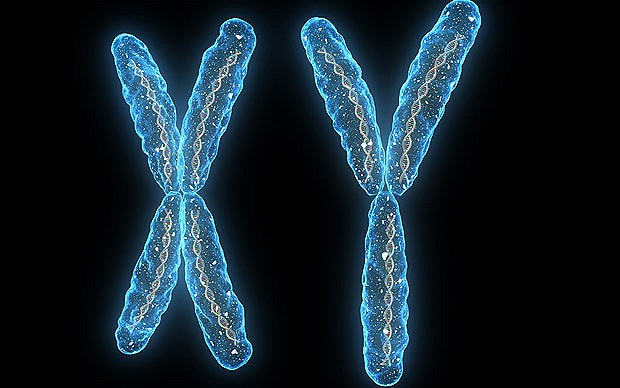Highlights
- •XIST is somatically expressed in a subset of male cancers
- •XIST expression in male cancers is associated with supernumerary X chromosome number
- •XIST+ male cancers display some hallmarks of X chromosome inactivation
Summary
Expression of the non-coding RNA XIST is essential for initiating X chromosome inactivation (XCI) during early development in female mammals. As the main function of XCI is to enable dosage compensation of chromosome X genes between the sexes, XCI and XIST expression are generally absent in male normal tissues, except in germ cells and in individuals with supernumerary X chromosomes. Via a systematic analysis of public sequencing data of both cancerous and normal tissues, we report that XIST is somatically activated in a subset of male human cancers across diverse lineages. Some of these cancers display hallmarks of XCI, including silencing of gene expression, reduced chromatin accessibility, and increased DNA methylation across chromosome X, suggesting that the developmentally restricted, female-specific program of XCI can be somatically accessed in male cancers.
Introduction
In female mammals, XIST-mediated X chromosome inactivation (XCI) is responsible for the epigenetic and transcriptional silencing of an X chromosome (chrX), thus achieving dosage compensation between the sexes (Galupa and Heard, 2018; Lyon, 1961). In eutherians, XCI in embryonic tissues is initiated during early development, randomly affecting one of the two chrX, and is thereafter stably propagated for a lifetime. XIST coats the future inactive chrX (chrXi) and choreographs a series of events that results in histone deacetylation, the spreading of repressive chromatin marks, and ultimately DNA methylation (Żylicz et al., 2019; Payer and Lee, 2008). Although XIST is critical for the initiation and establishment of XCI, its expression has been reported to be either dispensable (Brown and Willard, 1994; Csankovszki et al., 2001) or only partially responsible for XCI maintenance (Yu et al., 2021; Yang et al., 2020). In addition, while a majority of genes on chrXi are stably silenced via XIST-mediated XCI, a subset of genes escape this process (“escapees”) and are expressed bi-allelically (Disteche and Berletch, 2015).
Although XIST is typically considered to be a female-exclusive transcript, its expression has been noted in male individuals with germline supernumerary X (i.e., XXY or XXXY, also known as Klinefelter syndrome [KS]) (Kleinheinz and Schulze, 1994), in male human preimplantation embryos (Petropoulos et al., 2016), in male primordial germ cells (Vértesy et al., 2018; McCarrey et al., 2002; McCarrey and Dilworth, 1992; Ayoub et al., 1997; Guo et al., 2018), and in testicular germ cell tumors (TGCTs) that are derived from male germ cells (Looijenga et al., 1997; Kawakami et al., 2004; Zhang et al., 2005; Lobo et al., 2019; Kawakami et al., 2003). However, whether XIST expression in these contexts is associated with transcriptional or epigenetic silencing of X chromosome genes has not been systematically explored. Moreover, besides physiological XCI, XIST expression can be altered in somatic cells, and somatic XIST disruption—including potential XCI perturbation—has been suggested to be linked to cancer and other diseases. For example, conditional deletion of Xist in the blood compartment of the mouse leads to a myeloproliferative/myelodysplastic syndrome (Yildirim et al., 2013). Loss of chrXi in breast cancer is associated with altered dosage of X-linked genes (Chaligné and Heard, 2014). Also, XIST is required for the continual silencing of some X-linked immune genes in human adult B cells, a process that may be dysregulated in autoimmune diseases (Yu et al., 2021). In contrast to the extensive knowledge of XIST expression in physiological XCI, both the prevalence and the functional impact of somatic XIST perturbation are largely unexplored. Here, we report somatic XIST activation in a subset of male cancers arising from a comprehensive analysis of XIST expression and its transcriptional consequences in human cancers.
Results
XIST expression in male cancers of diverse lineages
Through an analysis of 33 different cancer types in The Cancer Genome Atlas (TCGA) (Weinstein et al., 2013), we identified 201 of 4,829 cancers (4.2%) that were annotated as male but displayed high XIST expression at a level comparable to female normal tissues (Figure 1A; Table S1, cutoff: TPM ≥ 3 or log2(TPM+1) ≥ 2). By assessing the heterozygosity of chrX and the abundance of chrY reads in the matching germline samples (Figure 1B), we identified four samples that were likely biologically female (46, XX) and three samples that were individuals with KS (47, XXY); these cases were excluded from downstream analyses (Figures 1C and S1; note: Figure 1A is plotted after this exclusion). The remaining 194 cases were classified as XIST+ male cancers. Among all male cancers, XIST positivity was most prevalent in seminomatous germ cell tumors (SGCT) (61/61, 100%; median XIST expression 185.6 TPM) and non-seminomatous germ cell tumors (NSGCT) (49/66, 74.2%; median XIST expression 79.2 TPM) (Figures 1D and S2; Table S2), consistent with prior reports of XIST expression in TGCT (Kawakami et al., 2004; Zhang et al., 2005; Lobo et al., 2019; Kawakami et al., 2003). However, XIST positivity was also observed across a wide range of other cancers derived from non-germ lineages (80/4,697, range 0%–4.5%, median XIST expression 18.6 TPM for XIST+ samples; Figures 1D and S2; Table S3). These XIST+ non-TGCTs did not show expression of testis-specific genes (Brown, 2019), suggesting that they are unlikely to represent misclassified GCTs (Figure S2)….







